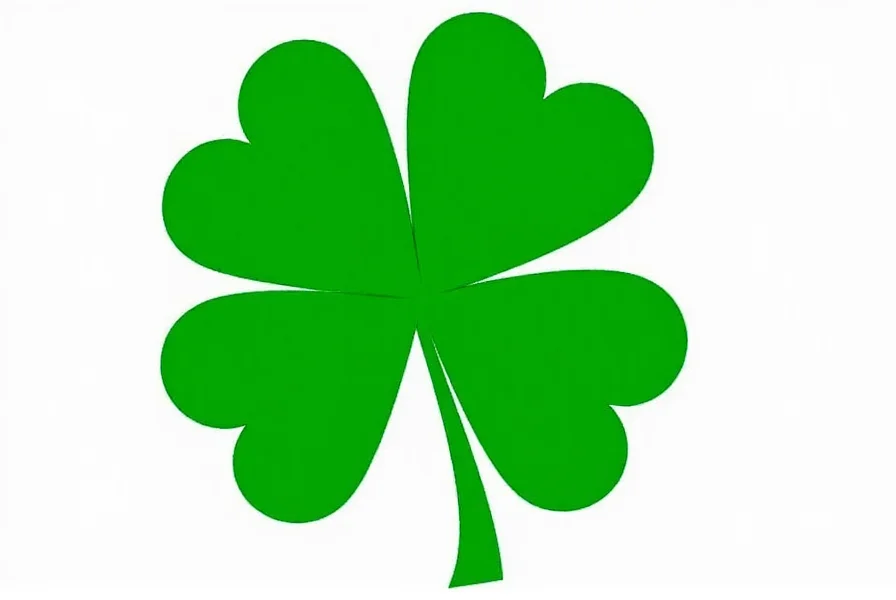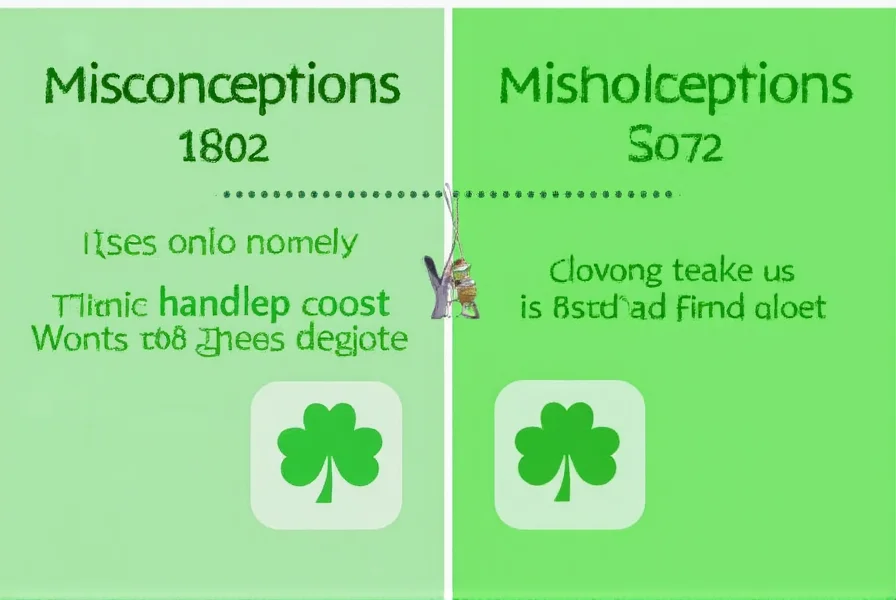Understanding the \"So Clover\" Confusion
Many internet users search for \"so clover\" when they actually mean \"so clever\"—a classic case of homophone confusion. The words sound nearly identical in casual speech, especially in certain English dialects. Linguists classify this as an eggcorn, where a similar-sounding word replaces the intended term while maintaining logical sense.
Alternatively, some searchers intend to learn about shamrocks (three-leaf clovers) or four-leaf clovers but mistype the phrase. The term \"shamrock\" comes from the Irish word \"seamróg,\" meaning \"little clover.\" Saint Patrick reportedly used the three-leaf clover to explain the Holy Trinity to Irish pagans in the 5th century.
Botanical Facts About Clover Plants
Clover belongs to the Trifolium genus, with over 300 species worldwide. The most common varieties include:
| Species | Leaf Count | Significance |
|---|---|---|
| Trifolium repens (White Clover) | Typically 3 | National symbol of Ireland |
| Rare genetic variant | 4 leaves | Considered lucky in many cultures |
| Microclover | 3 leaves | Drought-resistant lawn alternative |
The four-leaf clover mutation occurs due to recessive genes affecting leaf development. University of Zurich researchers identified specific genetic markers responsible for this variation in 2020. Contrary to popular belief, finding four-leaf clovers isn't purely random—some patches produce them more frequently due to localized genetic factors.
Four-Leaf Clover Symbolism Across Cultures
The four leaves traditionally symbolize:
- First leaf: Hope
- Second leaf: Faith
- Third leaf: Love
- Fourth leaf: Luck
This symbolism dates to at least the 1600s, when British botanist John Gerard noted in his herbal that \"they are usuallie found with foure leaves, which is a thing to be wondered at.\" Celtic traditions considered four-leaf clovers protective charms against fairies, while Victorian-era Europeans exchanged them as tokens of affection.
Practical Applications of Clover Today
Modern uses extend beyond symbolism:
- Sustainable landscaping: Clover lawns require 50% less water than traditional grass
- Agricultural benefits: Nitrogen-fixing properties improve soil health
- Edible uses: Young clover leaves contain vitamins A and C (when properly identified)
Gardeners increasingly choose microclover varieties for eco-friendly lawns. Unlike traditional turf grass, clover withstands foot traffic, naturally suppresses weeds, and blooms with nectar-rich flowers that support pollinators. The University of Minnesota Extension program recommends clover blends for reducing fertilizer dependency.

Debunking Common Clover Myths
Several persistent misconceptions need clarification:
- Myth: Four-leaf clovers are always smaller than three-leaf varieties
Fact: Leaf size depends on species and growing conditions, not leaf count - Myth: Finding a four-leaf clover guarantees financial success
Fact: No scientific evidence supports this claim—luck remains probabilistic - Myth: Shamrocks and clovers are different plants
Fact: \"Shamrock\" specifically refers to certain clover species used in Irish tradition
How to Identify True Clover Varieties
When searching for clovers, look for these identifying features:
- Compound leaves with 3-4 leaflets (rarely more)
- Small, spherical flower heads
- Stems with slight grooves
- Growth patterns forming low mats
Avoid confusing clover with look-alikes like wood sorrel (which has heart-shaped leaves) or black medic (with yellow flowers). The USDA Plant Identification Guide provides detailed comparison charts for accurate identification.
Frequently Asked Questions
Is \"so clover\" a correct phrase or just a misspelling?
\"So clover\" is almost always a misspelling of \"so clever.\" The confusion arises because both phrases sound identical in casual speech. Linguists call this an eggcorn—a mishearing that creates a new, logical phrase.\"Shamrock\" is the correct term for the three-leaf clover symbolizing Irish heritage.
What causes four-leaf clovers to grow?
Four-leaf clovers result from genetic mutations affecting leaf development. Researchers at the University of Zurich identified specific recessive genes responsible for this variation. Environmental factors like soil composition and sunlight exposure can influence mutation frequency, explaining why some patches produce more four-leaf variants than others.
Can I grow four-leaf clovers intentionally?
While you can't guarantee four-leaf production, certain practices increase your chances. Plant white clover (Trifolium repens) in well-drained soil with partial shade. Some commercial seed blends contain higher concentrations of the four-leaf gene variant. The University of Georgia recommends maintaining consistent moisture levels to encourage genetic expression variations.
Are four-leaf clovers actually lucky?
The luck association stems from historical rarity—finding something uncommon felt fortuitous. Scientifically, four-leaf clovers occur in about 1 in 5,000 plants. While no evidence proves supernatural luck, psychologists note that the search process encourages mindfulness and pattern recognition, which may indirectly improve decision-making skills.
What's the difference between shamrock and clover?
\"Shamrock\" specifically refers to certain clover species (mainly Trifolium dubium and Trifolium repens) used in Irish tradition. All shamrocks are clovers, but not all clovers are considered shamrocks. The term \"shamrock\" comes from the Irish \"seamróg\" (little clover) and denotes cultural significance rather than botanical classification.











 浙公网安备
33010002000092号
浙公网安备
33010002000092号 浙B2-20120091-4
浙B2-20120091-4